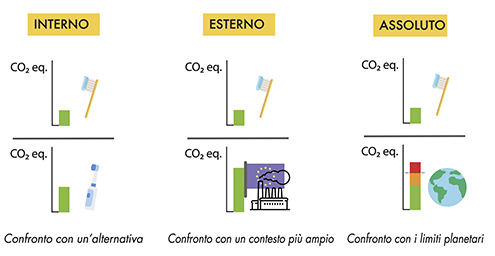NORMALISATION AND WEIGHTING IN THE LIFE CYCLE ASSESSMENT METHODOLOGY: POSSIBLE APPROACHES AND STATE OF THE ART
Main Article Content
Abstract
This article fits into the landscape of the Life Cycle Assessment (LCA) methodology, which aims to evaluate the environmental impact of a product by looking at its entire life cycle and considering its impact on different environmental effects such as climate change, acidification, marine eutrophication, human toxicity, photochemical ozone formation, land water and resources use. These effects are called impact categories and they are measured through dedicated indicators. An LCA study consists of four iterative phases: the goal and scope definition phase, the inventory analysis phase (LCI phase), the impact assessment phase (LCIA phase), and the interpretation phase. According to ISO 14044, the technical standard which provides requirements and guidelines on how to conduct an LCA study, the LCIA phase includes some mandatory elements, such as the classification and characterisation steps, and some optional elements, namely normalisation, grouping, and weighting. The objective of this article is to provide an overview of normalisation and weighting, while grouping, which consists of sorting and possibly ranking of the normalised impacts related to different categories, is not discussed in this article. As described in the technical standard ISO 14044, normalisation is the calculation of the magnitude of the category indicator results relative to a system taken as a reference. The impact of the system takes the name of normalization factor and one normalization factor is calculated for each impact category. Therefore, normalisation might help to state the relevance of the impacts by comparing the product of the study with something that the reader can more easily imagine, it might help the analyst to check for inconsistencies among the results and it might help to scale the results related to different impact categories to a common unit of measurement, thus making possible their aggregation into a single final score. The weighing phase, on the other hand, allows the analysts to assign a weight, which is a numerical factor based on value-choices, to each impact category making then possible to aggregate the normalised and weighted results to obtain a final score that indicates the environmental impact of the product.
Since normalisation and weighting are not mandatory, many studies do not include them and they stop at the previous step, i.e. the characterization. However, a research conducted in 2015 within the context of the Life Cycle Initiative, a joint initiative of the United Nations Environment Program (UNEP) and the Society of Environmental Toxicology and Chemistry (SETAC), showed that, although it is considered complicated and still not very robust to use them, both these phases are considered relevant for decision-making purposes. The aggregation of the normalised and weighted results, in order to provide a single score of the overall environmental impact of a product, is indeed helpful for the decision-maker for whom the interpretation of the multiple environmental information can be complex. Finally, the present work has investigated the current use of these optional steps in LCA studies published in the scientific journals “Waste Management” and “Resources, Conservation and Recycling”. The sample was restricted to LCA studies applied to wastes, covering the biennium 2019-2020, and the results show an increasing concern toward the inclusion of these two optional steps in LCA studies.

